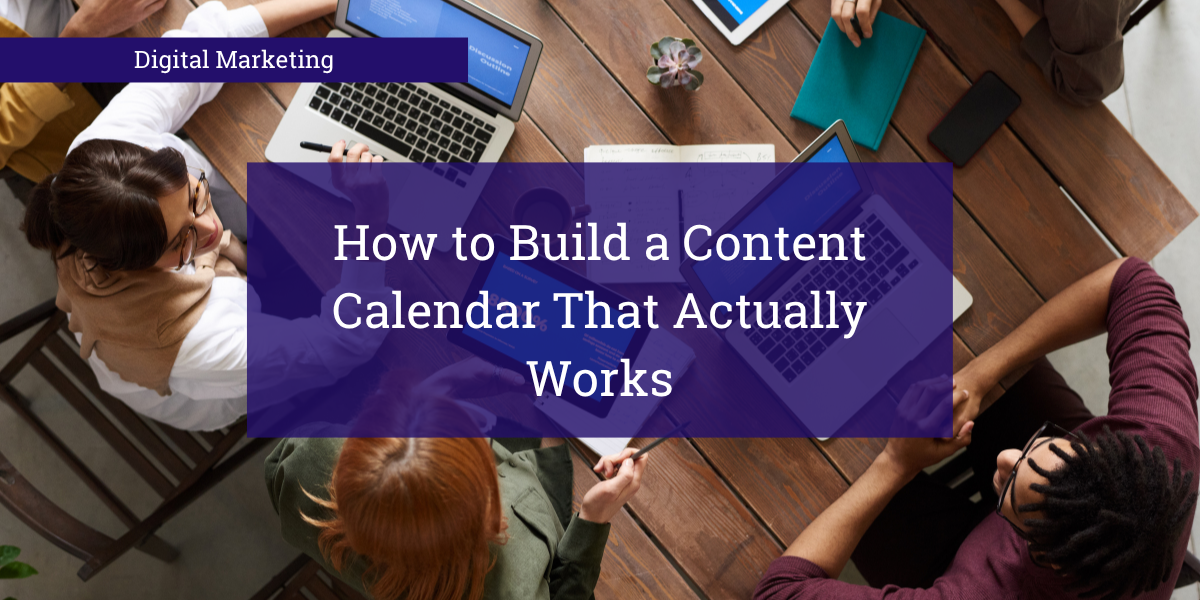A content calendar isn’t just a nice-to-have. It’s one of the most effective tools for aligning your team, your message, and your marketing goals, whether you’re a solo founder, a small business, or a multi-channel brand.
If you’ve been winging it, this is your sign to stop. Time to get your content on a leash.
What is a Content Calendar?
At its simplest, a content calendar is a plan. It shows what content you’re creating, where it’s going, and when it’s going live. But it’s more than just a schedule. It’s a way to prioritize strategy, reduce chaos, and keep every piece of content connected to something bigger.
A good calendar doesn’t just track social posts. It creates a high-level communications strategy that aligns every channel: blog, email, social, paid, influencer, organic, and retail.
Why It’s Worth Your Time
Even small brands benefit from taking a more organized, strategic approach. A content calendar:
- Drives alignment. It keeps teams on the same page and ensures messaging is consistent across channels.
- Supports real strategy. Planning ahead means content has a clear purpose and ties back to business priorities.
- Saves time. It reduces last-minute work, improves collaboration, and creates room for creative thinking.
- Gives you something to measure. You can’t improve content performance if you’re not tracking what’s happening.
What a Content Calendar Should Include
Start big, then zoom in. Your calendar should be built from the top down, starting with high-level business initiatives and filtering down to individual channel tactics. At minimum, include:
- Major brand or product moments (launches, campaigns)
- Relevant dates (holidays, industry events)
- Content themes (monthly or seasonal focus areas)
- Channels (blog, email, paid media, organic social, retail, etc.)
- Funnel stage support (aligned with the hourglass journey)
- Roles and deadlines (who’s doing what, and by when)
- Performance checkpoints (what you’ll evaluate, and how often)
Where to Start
You don’t need a giant spreadsheet or expensive tool to get value from a content calendar. A Google Sheet is more than enough when you’re getting started. You can also use project management tools like ClickUp, Trello, and Basecamp, especially if you have a larger team and want to assign specific tasks to team members.
Begin by mapping out the next 1–3 months. Include the business or marketing priorities you already know like product drops, sales goals, and events. Then build your content around those milestones, focusing on what matters most for your audience at each stage of the funnel. Limit yourself to the channels you can actually manage well. Quality beats quantity every time.
Misconceptions That Get in the Way
A few things we hear a lot:
- “We don’t have enough going on to fill a calendar.” Most brands have more content potential than they think. Customer education, product demos, community highlights, FAQs, behind-the-scenes content, and more all qualify.
- “It’s just for social.” Sure, social is a huge part of content development, but a real calendar includes and benefits every relevant communication touchpoint.
- “It’s too rigid.” A good calendar leaves room to shift priorities, respond to trends, and adjust as needed.
Common Mistakes to Avoid
- Only planning for awareness-stage content. This is where building the different stages into the content calendar is so key. Ensure that the channels are properly placed and content is evenly spread across so you can reach your full audience.
- Overplanning with too much content. Especially when starting out, consider priority content ideas and build multiple posts, emails, and other content around that topic. There are numerous opportunities to leverage a single topic.
- Creating content without aligning it to business priorities. Ensure the work has a purpose.
- Letting one department “own” the calendar without cross-functional input. Everyone must have buy-in and input to ensure success.
- Treating it as a set-it-and-forget-it document. We see this too often. Avoid this by holding people accountable. Assign deadlines and task owners to all work.
How to Make It Work
- Start with business goals. Let major initiatives lead your planning.
- Make it cross-channel and cross-functional. Involve everyone who contributes to or relies on content. Consider an initial development brainstorming meeting.
- Build in flexibility. Leave space for real-time content and last-minute changes.
- Revisit regularly. Review performance, adjust your plan, and keep the calendar visible and current. Cross-functional quarterly check-ins can help keep everyone accountable and ensure alignment across teams.
The Bottom Line
The best content plans aren’t flashy, they’re functional. A good calendar helps you stay focused, work ahead, and avoid the last-minute scramble. Give your content the structure it needs to sit, stay, and perform. You knew I’d sneak in a dog reference or two. It’s the rules.




